Greetings, blog readers and happy mid-autumn to all. The mid-autumn festival is a holiday in China/Hong Kong that celebrates the harvest of the fall crops and the time when the red moon is the brightest of the year. Of course, here in Northeast, it coincides with the very beginnings of the beautiful changing colors of leaves.
The mid-autumn or moon festival is celebrated yearly based on the Chinese lunisolar calendar. It usually falls in September or October. The traditions have been preserved throughout the centuries with the lighting of lanterns, the dragon dances and of course, the devouring of moon cakes! Moon cakes are small pastries made of a thin cake layer filled with lotus paste and (if you are worthy) a baked egg yolk (or four) in the middle. Although these moon cakes are as small as the palm of your hand, they are so dense and rich that just one is meant to be shared with family members as tiny slivers to promote unity. They will surely spike up your sugar levels!
Tradition says that moon cakes did not hold yolks in the beginning. My dad told me the story that during the Yuan dynasty, moon cakes were used as a communication device by the Ming revolutionists as a way to smuggle messages to help overthrow the Mongol rule. To promote the distribution of the secret messages, revolutionists spread the rumor that a deadly plague was infecting the towns and the only way to prevent it was to eat moon cakes during the autumn season. Since then, moon cakes have played a large role in preserving Chinese history and have circulated as the coveted dessert of this holiday, but without any secret messages.
This year, Siddharth and I wanted to celebrate this holiday and start our own tradition for the occasion with a large homemade feast. Our feast included “lucky” fried rice, kung pao chicken, young greens (choy sum, 菜心), dumplings (gao zi, 告子) and an elaborate dessert course of starfruits, oranges, moon cakes (of course) and a taro sponge cake. When I say feast, I mean FEAST!
Let’s start with the lucky fried rice. This is no ordinary fried rice that you can order at a restaurant because it was filled with Chinese bacon and wind-dried sausage (lap cheong, 臘腸), two meats that are very rich in fat and deliciousness. Chinese bacon is unsmoked and cured with spices like anise and cloves along with soy sauce, while the sausage is made with chunks of fat and rice wine in addition to other seasonings. By steaming the meats ahead of time, some of the fat melts and creates a luscious texture that is totally different from the American breakfast versions. The flavors of these specialty meats really infused the rice during wok-frying (Siddharth has invested in a traditional carbon-steel wok, and the flavor benefits are really apparent!). The rice was also fried with carrots and scallions, along with 8 eggs (8 is considered a lucky number associated with a rich life in Chinese culture).
The next dish was a kung pao chicken cooked with red chilies and fried cashew nuts. Although not a traditional Cantonese dish, it is one of our favorite stir fry meals, and it added a personal touch to our nascent tradition. Serving at least one green is considered a traditional part of any Cantonese meal, and as our vegetable, we chose choy sum (菜心). It has tender stalks and stems and leafy greens and a few soft yellow flowers. I was inspired to pick choy sum for this meal, as it is a big favorite of my grandpa’s.
Dumplings are an integral part of celebratory meals in Cantonese cooking. Dumplings are known as gaozi (告子) in Cantonese. I’ve been eating frozen dumplings since the beginning of my college days, but for this event, I took a shot at finally making them from scratch. Making the dumpling dough from scratch was surprisingly easy. It was just a mixture of boiling hot water and flour plus a lot of kneading. Siddharth pre-cooked the pork filling with Chinese cooking wine, sugar, soy sauce, and scallions. By pre-cooking the pork, you won’t have to worry on the steam time of the dumplings later on. I made the dumpling shapes as simple as I could, but I promise I will learn the correct way of pleating dumplings soon!
After Cantonese meals, fruits are the traditional palette cleansers. For this particular holiday, Siddharth and I decided to have starfruit and oranges, which are customarily eaten for the mid-autumn festival in Hong Kong. Sharing and eating fruit during this holiday signifies the harvesting of crops and the sharing of seasonal goods with family and friends. For us, the fruit was used to cleanse our palettes for the upcoming baked goodies we were about to devour! We sliced our moon cake (bought recently on a trip to Brooklyn’s Chinatown in Sunset Park – see upcoming post!) to the appropriate sliver size and slowly consumed the thick lotus paste. The egg yolk helps cut the sweetness of the paste without changing the texture of the moon cake itself.
The heaviness of the moon cake was complimented with a nice slice of taro sponge cake that I made for Siddharth. Siddharth loves taro and we were fortunate enough to find real taro in an Asian Supermarket in Flushing NYC. We mashed the taro with cream and honey to make a sweet paste as a filling for the sponge cake and made a taro-flavored whipped cream to top it off. The color of the natural taro was beautiful (see our pictures!). The purple was so bright that it looked almost unnatural. And when sandwiched between two cake layers, the color popped out even more. I love purple and sponge cake, so this cake is definitely a cake I will remember.
After such a full meal and delicious desserts, I was able to reflect and be thankful to be able to maintain the culture traditions I grew up with. I was also thankful that we now have a chance to make our own personal traditions for the occasion. Siddharth and I have a unique opportunity to celebrate a multitude of amazing traditions as we are Cantonese, Indian, and American, and we are going to strive to embrace each from here. We hope to share our culture traditions with you so that you can embrace passed down traditions and make them your own as well!


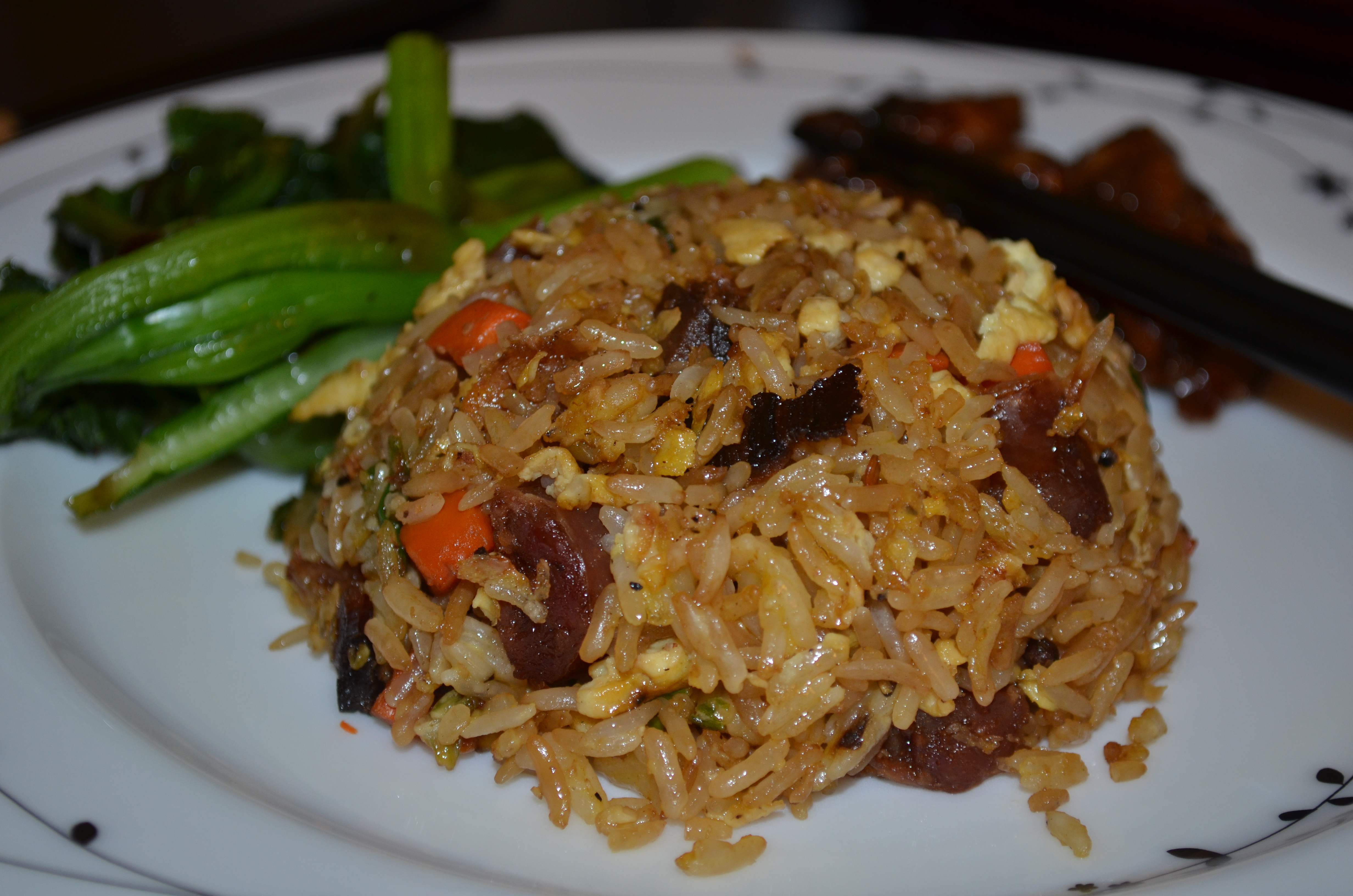
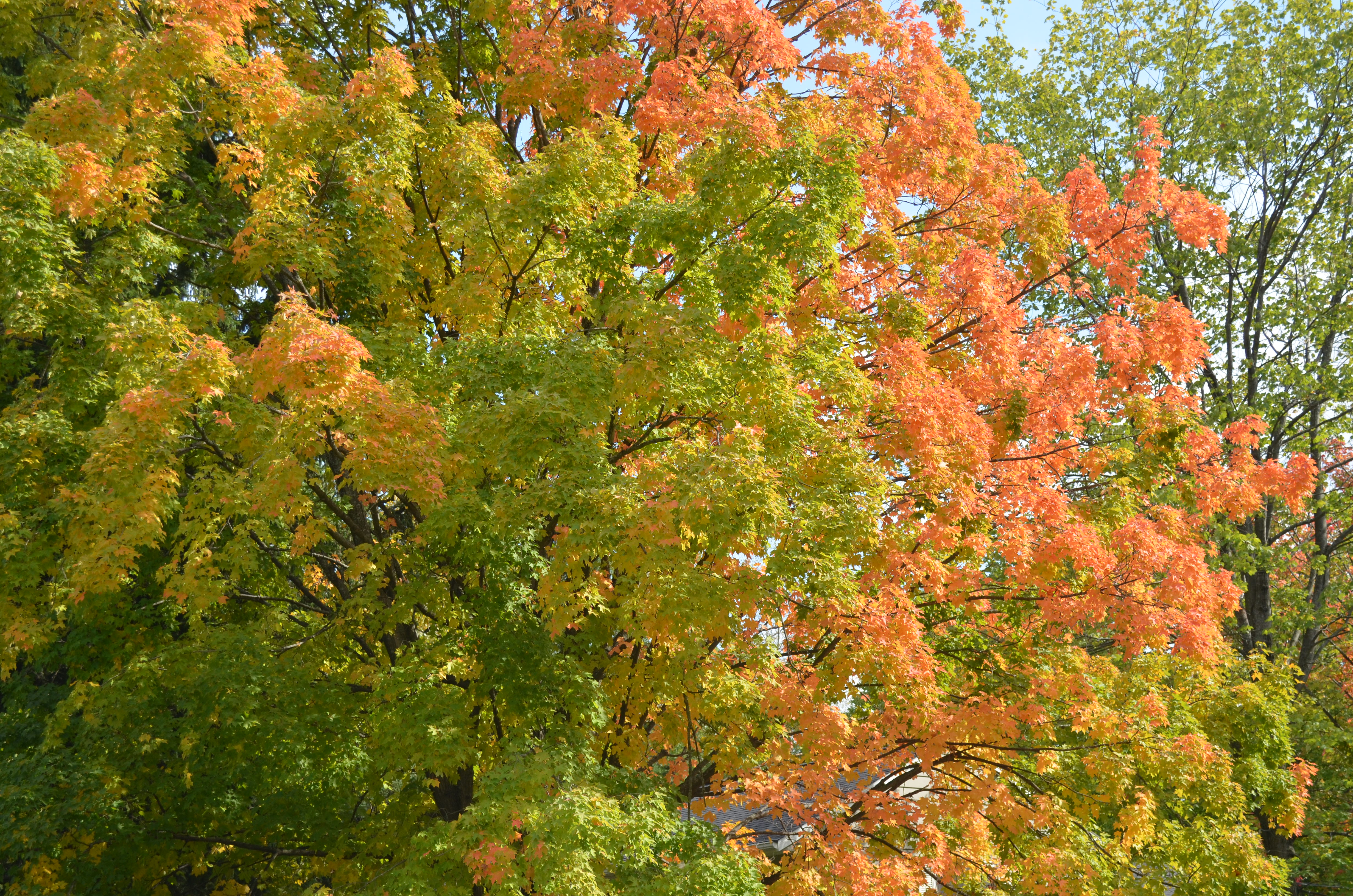
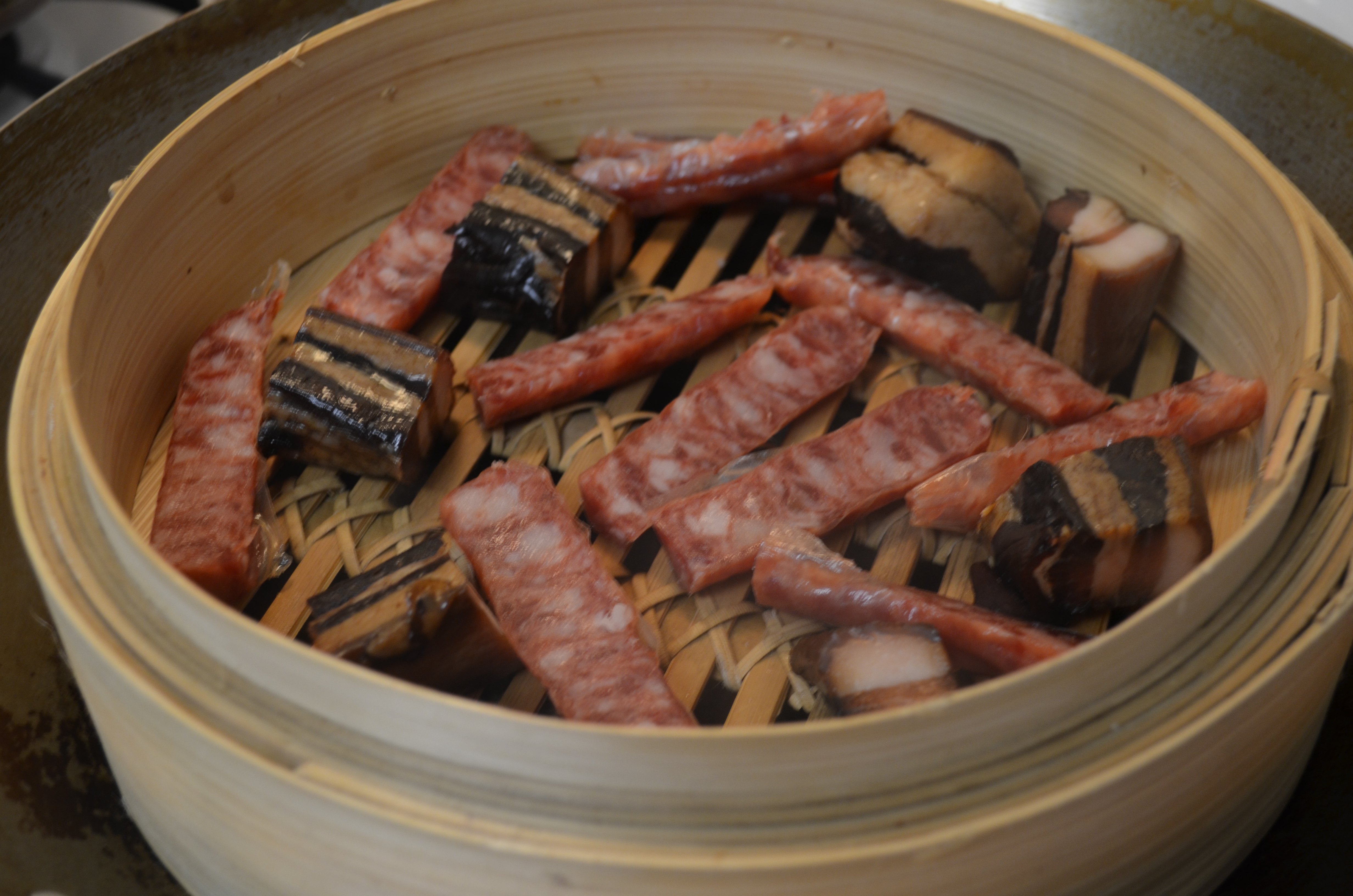
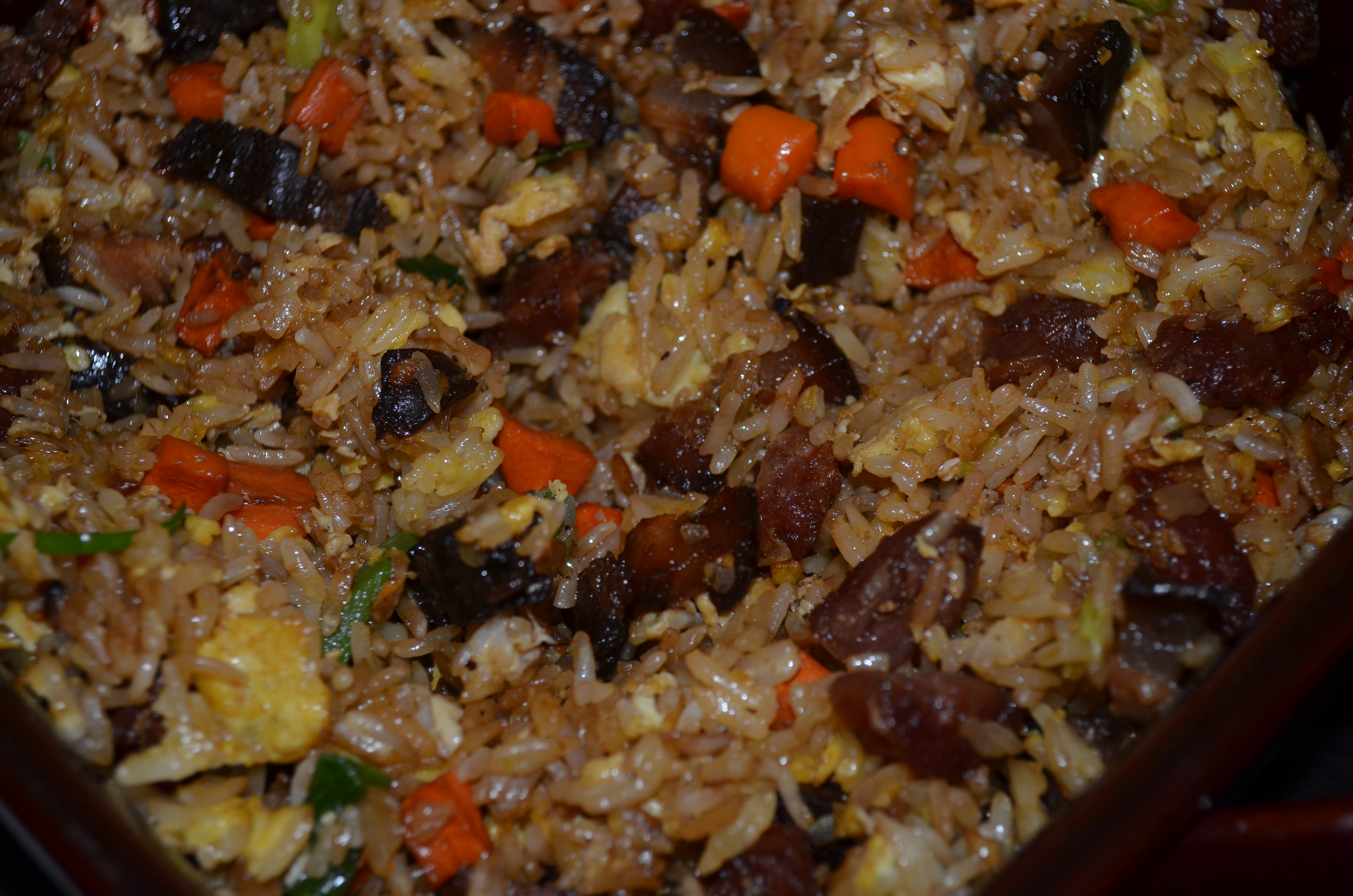
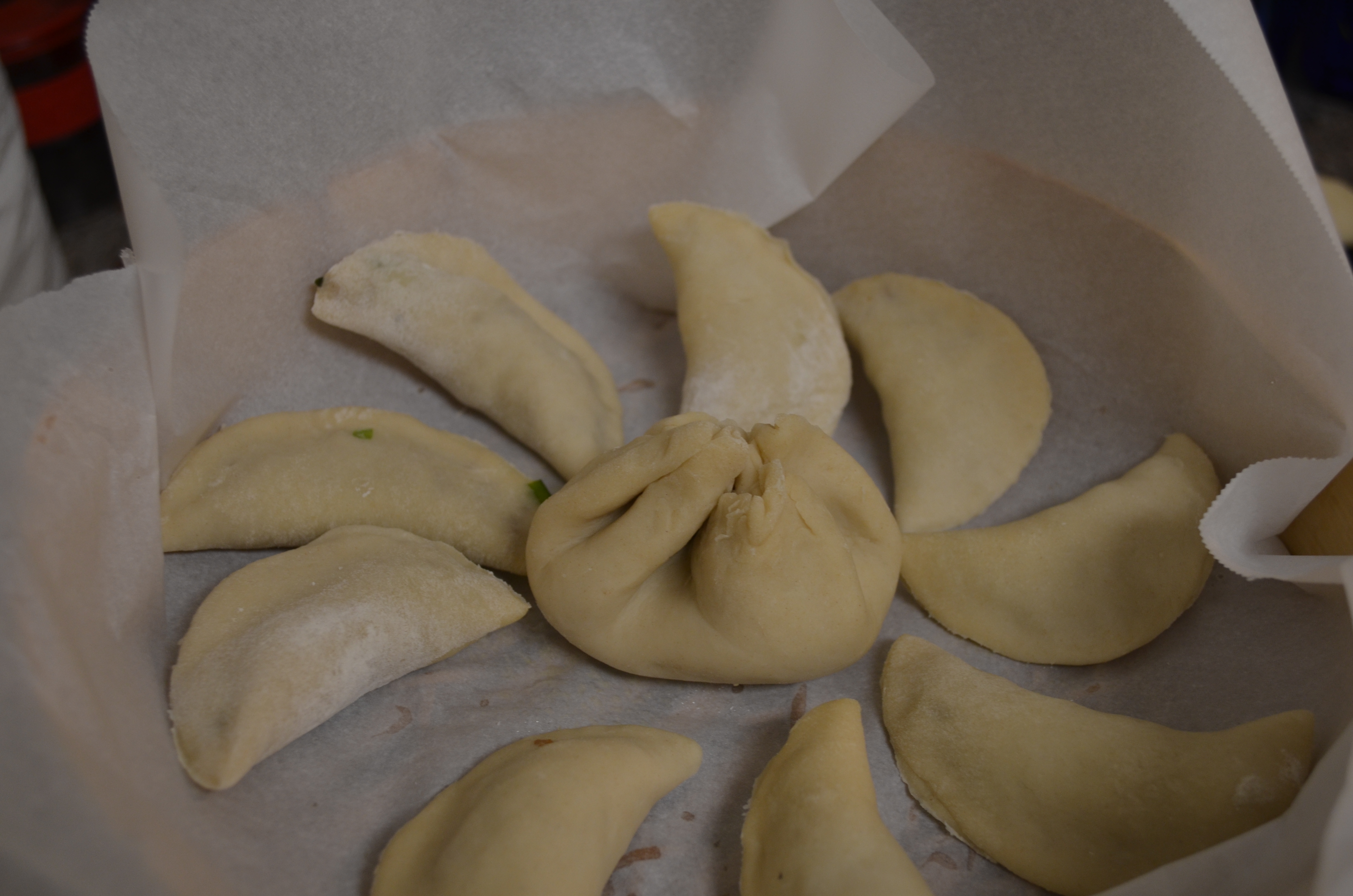
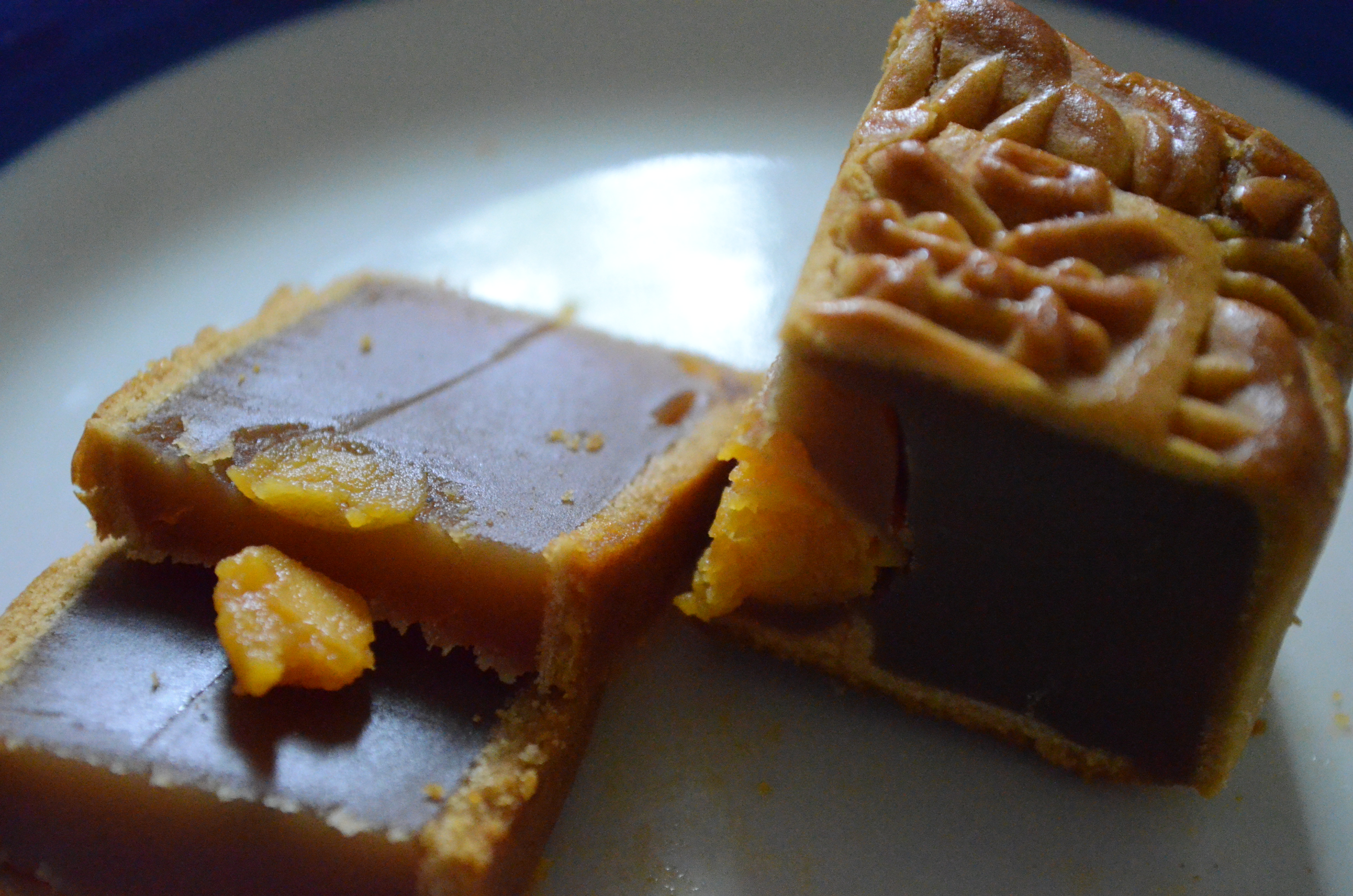
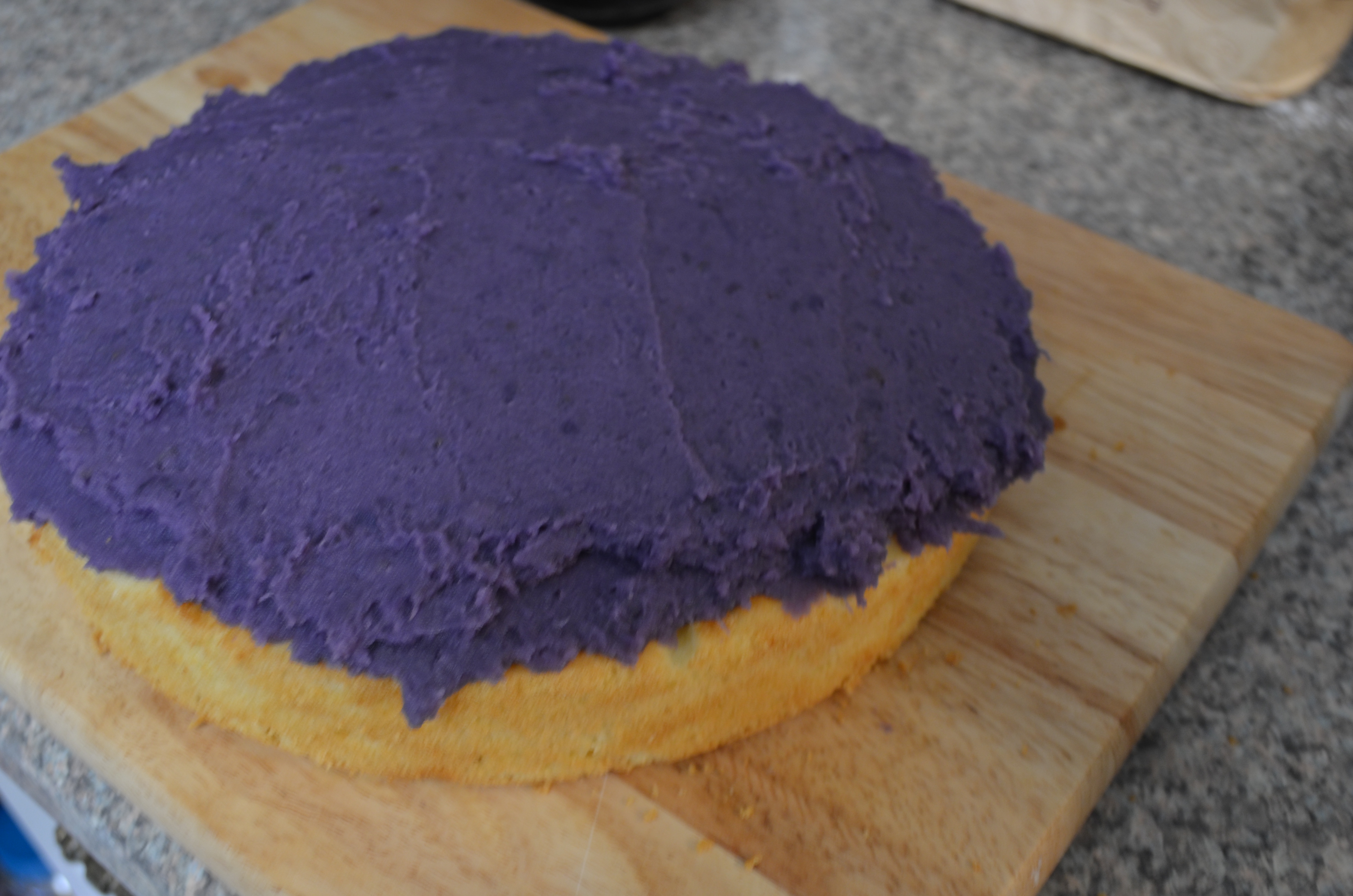

All your food looks so beautiful and colorful. How wonderful, that you can celebrate a multitude of traditions in such an edible fashion. Glad that you are celebrating your cultures. Great job!
Trish: Wow – what a gourmet meal! Very glad that you’ve embraced the mid-autumn festival tradition and included Grandpa’s favorite vegetable in your own celebration. Can’t wait to taste some of your dishes soon. Love Mom.